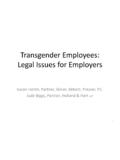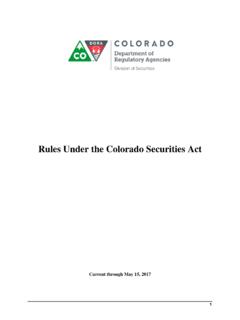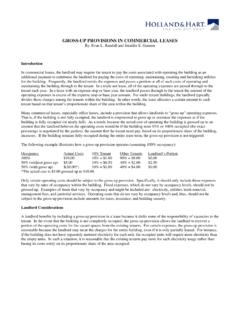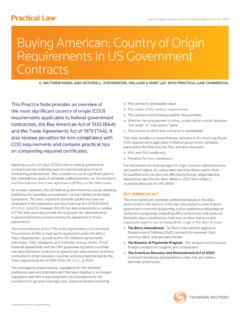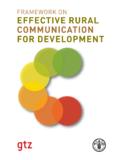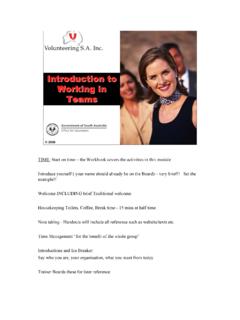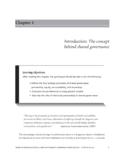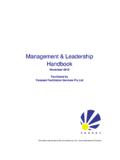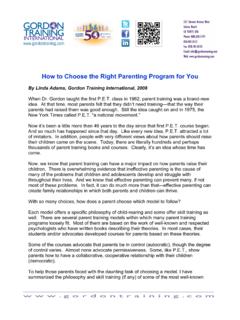Transcription of Compliance Plan Webinar 2017 PPT - Holland & Hart
1 Compliance PlansKelly S. McIntoshJuly 20, 2017 Roadmap The importance of Compliance and Compliance programs Common Compliance issues know your risk areas! Guidance for drafting or updating your Compliance plan Elements of a Compliance plan Compliance is a process Measuring Compliance program effectiveness Measuring Compliance Program Effectiveness: A Resource Guide OIG Evaluation of Corporate Compliance Programs - DOJP reliminaries Written materials: PowerPoint slides OIG Compliance Program Guidance for Individual and Small Group Physician Practices (65 Fed. Reg. 59434; October 5, 2000) OIG Guide DOJ FAQ Presentation will be recorded and available for download at If you have questions, please submit them using chat line or e-mail me at If you experience technical problems during the program, please contact Luke Kelly at This program offers an overview of legal considerations for Compliance plans Not one size fits all - a Compliance program needs to reflect your provider type, size and circumstances This program does not establish an attorney-client relationship This program does not constitute the giving of legal adviceWithout ComplianceRisks Enforcement False Claims Act (31 3729-3733) Exclusion (42 1320a-7) Civil Monetary Penalties Law (42 1320a-7a) Criminal (18 287, 1001,1035, 1347)
2 Duty to self-report and make repayments Medicare overpayments must be repaid 60 days after identify existence of overpayment, or by the date the corresponding cost report is due Qui Tamactions AuditsRisks Fines and Settlements Reputation Harm Operational Interruptions Lost ProfitsRisks In 2016, the OIG reported: More than $ billion in recovery 765 criminal actions 690 civil actions 3,635 exclusions 2017 - over 40 new Corporate Integrity Agreements so I Really Need a plan ?Mandatory Compliance Plans Affordable Care Act Section 6401 of the ACA requires Compliance plans for providers across industry sectors and categories (as selected by HHS) as condition for Medicare/Medicaid/CHIP enrollment Section 6102 of the ACA requires that skilled nursing facilities (SNFs) adopt Compliance plans by March 23, 2013. Implementing regulations have not been issuedMandatory Compliance Plans Affordable Care Act Future applicability? Be proactive no need to wait for regulations to establish plan OIG guidance for Compliance plans Hospitals Medicare+Choice Orgs Home Health Agencies Nursing Facilities Clinical Laboratories Ambulance Suppliers Third-Party Billing Companies Pharmaceutical Manufacturers DME, Prosthetics and Orthotics SuppliersMandatory Compliance Plans Others Medicare Advantage (MA) managed care entities Prescription drug (Part D) plan entitiesOther Reasons to Have a Compliance Program Public and organizational image - demonstrates commitment to doing the right thing Reduces risk of audit Minimizes requirement (or impact) of a CIA Mitigation factor Reduces threat of Qui Tam(whistleblower)
3 Actions Raises awareness throughout organization Encourages reportingOther Reasons to Have a Compliance Program Good Business Increases efficiency of claims payments Reduces denied claims Improves documentation Practicing preventative medicine for your organizationIdentifying Your Risks Your practice will have specific risks Size, provider type OIG Compliance guidance is a good starting point for common risks based on type Examples: Physician practice risk areas Documentation Billing and coding Improper inducementsIdentifying Your Risks Revisit risks Each year is good rule of thumb Sources for new and timely risk considerations: OIG Annual Work plan ( ) RAC approved issues lists State and federal reports Don t forget YOUR internal sources! Complaints Staff interviews Audit reportsYour Compliance plan Seven fundamental elements of a Compliance program:1. Implementing Compliance standards (policies, procedures and standards of conduct)2.
4 Designating a Compliance officer and/or committee3. Conducting training and education4. Developing open lines of communication5. Conducting internal monitoring and auditing6. Enforcing standards through well-publicized disciplinary guidelines7. Promptly and appropriately responding to detected issues, including corrective actionYour Compliance plan From the Federal Sentencing Guidelines Control sentencing of organizations in most Federal criminal violations Credit for effective programs to prevent and detect violations of law Effectiveness is key Interdependence of elementsYour Compliance plan Commitment to all elements, even if implemented over time For physician practices, take a step-by-step approach to implementing a Compliance program based on resources available not all or nothing Participate in other organizations programsStandards, Policies and Procedures Code of Conduct Separate from policies and procedures Simple, short Set forth the ethical attitude of the organization Outline duties and goals Post prominently and distributePolicies, Procedures and Standards of Conduct Areas to cover (as applicable to your provider type).
5 Billing and Coding Reasonable and necessary services Documentation (medical records and claims forms) Improper inducements, kickbacks and self-referrals Employment/Labor Issues Safety EMTALA Information Privacy and Security (HIPAA/HITECH/state) Record Retention Accreditation Other Federal and State LawsPolicies, Procedures and Standards of Conduct Policies and procedures can also further detail functions of the Compliance program: Reporting mechanisms Investigations Put in writing and maintain where staff can access Avoid overly complex language Include examplesPolicies, Procedures and Standards of Conduct Don t let these collect dust! Update as appropriate at least review annually Identify who is responsible under each policy Educate staff and responsible parties on policies Distribute to staff and have them acknowledge receipt and reviewCompliance Officer and/or Committee Providers of any type and size should designate a Compliance officer/contact (or officers/contacts) For larger organizations, a Compliance committee may also be appropriate Sub-committees Audit EnforcementCompliance Officer and/or Committee Compliance officer duties: Develop and update policies Training General Preliminary and Periodically Targeted Specific topics and in response to issues Ensure independent contractors are aware of Compliance plan Point person for complaints and investigations Independence is important Increases effectiveness Promotes buy-in from staffTraining and Education Training Who should receive training?
6 EVERYONE including management and Board Remember to consider outside and related parties like billing companies Compliance officer and committees should also have ongoing training and education General Upon hire Upon implementation of Compliance program Annually Targeted Specific topics and in response to issues Maintain training logsTraining and Education Board and Senior Management Responsibilities Responsible for Compliance program Can be held accountable for non- Compliance whether aware or not If in a position to prevent and correct issues but fail to do so, can be held liable, even criminally The OIG will hold senior officials liable for fraud CMS guidelines on Governing Body and Senior Management within Medicare Manuals for certain provider types Hospital ASCR eporting and Communication Mechanisms for reporting Internal vs. external Non-retaliation policy Confidentiality and anonymity Exit interviewsReporting and Communication Developing open lines of communication: Access to Compliance officer Use reasonable person standard require reporting for conduct a reasonable person would believe erroneous or fraudulent User-friendly process Drop box Phone line Email/websiteReporting and Communication Investigations Define process through policies Attorney-client privilege considerations Interviews and information collection Confidentiality Reporting to leadershipMonitoring and Auditing Define the difference between monitoring and auditing Monitoring: Ongoing self-review of areas to assess and assure processes and systems are compliant.
7 Not usually independent Auditing: Objective (and often independent) look at an area for the purposes of reporting factual resultsMonitoring and Auditing Baseline audit know where you are starting from Look to a specific period of time ( 3 months after initial training and program implementation) Concurrent vs. retrospective Internal vs. external Sharing results throughout organizationMonitoring and Auditing Examples of items to monitor: Excluded persons list ( ) Physician relationshipsMonitoring and Auditing Examples of items to audit: Standards and procedures (the Compliance program!) For each of the elements ask: Have you established a structure to comply with the requirement? Is the content sufficient? Do you properly implement the requirement? Do you measure the program effectiveness? What internal controls, indicators, or outcomes do you have to give assurance that the structure/processes implemented are working? Claims (coding, documentation, medical necessity)Monitoring and Auditing OIG recommendations for auditing: Annual review 5 or records per Federal payor 5-10 records per physician Larger sample size = more confidence in resultsEnforcement through Disciplinary Guidelines Sanctions for non-compliant behavior Apply consistently and across levels Set levels of severity but also allow for flexibility OIG guidance on disciplinary procedures: Set forth expectations Identify what constitutes non-compliant behavior Set forth possible disciplinary actions More significant sanctions for intentional or reckless behaviorResponse to Detected Behavior Correct problems Repayment of overpayments Other government disclosures (if necessary) Corrective Action plan Monitoring Document Actions to Show ResponsivenessYour Compliance PlanYour Compliance plan Compliance is a process Continually review Is plan being followed?
8 Updates necessary? Are staff and leadership aware of plan ? Assess for effectiveness Set goals and benchmarks Assess for new risks Commit adequate resourcesYour Compliance plan Having an ineffective or outdated plan may be worse than not having a plan at all!Recent DOJ and OIG Guidance Increased focus on if a program is effective, not what it looks like With new guidance, providers can expect that investigators will ask how programs effectiveness was measuredRecent DOJ and OIG Guidance DOJ FAQ questions covering 11 categories: Analysis and Remediation of Underlying Misconduct; Senior and Middle Management; Autonomy and Resources; Policies and Procedures; Risk Assessment; Training and Communications; Confidential Reporting and Investigation; Incentives and Disciplinary Measures; Continuous Improvement, Periodic Testing and Review; Third-Party Management; and Mergers and Acquisitions. Recent DOJ and OIG Guidance OIG Resource Guide Reinforces that Compliance is not one-size-fits-all Suggestions on methods by which effectiveness can be measured Continued focus and reinforcement of the seven elements: Standards, Policies, and Procedures Compliance Program Administration Screening and Evaluation of Employees, Physicians, Vendors and other Agents Communication, Education, and Training on Compliance Issues Monitoring, Auditing, and Internal Reporting Systems Discipline for Non Compliance Investigations and Remedial Measures Encouraging Buy-In Explain to staff the benefits of effective Increased efficiency Maximized revenue Happier patients And the consequences of Employment sanctions Fines and repayments Prison!
9 Encouraging Buy-In Set tone at the top Transparency ResourcesAdditional Compliance Resources OIG Compliance Resources Work Plans, Advisory Opinions, Fraud Alerts, Settlements State Attorney General actions Medicaid Fraud Unit actions Compliance organizations Internet beware May be outdated May not be from a qualified sourceAdditional Holland & Hart Resources Healthcare Update and Health Law Blog Under Publications at E-mail me at Holland & Hart Resources Past webinars covering Compliance topics and available through the Health Law Blog: Stark Anti-Kickback Statute Civil Monetary Penalties laws Physician Contracts HIPAA EMTALA AntitrustQuestions?Kelly S. McIntoshHolland & Hart LLP5441 Kietzke Lane, Second FloorReno, Nevada 89511(775)
